Ancient Secret of Symbols Found in Palm-Leaf Manuscripts? Indian Hindu Writing System Revealed
Instagram :- https://instagram.com/praveenET
Twitter :- https://twitter.com/IamPraveenMohan
Email id :- phenomenaltravelvideos@gmail.com
This is my PayPal account if you would like to support me :- https://paypal.me/hindutvawadi
0:00 - Ancient Indian Texts
1:27 - How do they make it?
2:08 - How to write?
3:25 - WHY no Ink?
4:09 - How do they SURVIVE?
4:52 - Types of Styluses
6:13 - Marks on top?
7:53 - Conclusion
Special thanks to Jayesh Kumar Pandian - His Channel:
https://www.youtube.com/channel/UChoS...
Hey guys, today we are going to look at how ancient Indians wrote and preserved their sacred texts. Around the world, there have been many different writing practices, the Egyptians were using Papyrus, Sumerians used clay tablets, but in India, Palm-Leaves were used. The earliest known palm leaf manuscript is about 2600 years old, and almost all ancient Indian texts were exclusively written on these palm leaves, and only a very small portion was written on metal plates and on stones as inscriptions. I have shown you several ancient stone inscriptions in my other videos, but in this video let us focus on Palm-Leaf Manuscripts. My friend Jayesh has a large collection of these manuscripts so let us take a closer look at them.
Here you can see palm leaves which date back several centuries and the question that immediately pops into your mind is this: How do palm leaves survive for this many centuries? Why are they not damaged by termites, dampness or by mere human touch? These palm leaves are carefully prepared from a specific type of palm called Borassus or Palmyra Palm. The young shoots are cut off from the tree and these shoots are boiled in water and then dried in shade for several days. After drying, the palm leaves would be polished using pumice stone. At this stage, the palm leaf would be ready for writing.
So what kind of pen and ink were used? This weird device was used for writing, and there is no ink involved. It looks very strange, but this instrument has a pointed stylus on one end and there is a knife on the other end. Did they use the knife as a weapon? No, they used it to cut the leaf into desired size. The pointy stylus did not dip into a pot of ink, but the stylus was pressed with sufficient pressure to imprint words, we can still use the same process and inscribe words on palm leaves . And we can read the words - this reads Palm Leaf. We do see some manuscripts which have used ink, writing with ink was practiced in Tibet, and in some other parts of ancient India, But the most popular writing process, was inscribing words on these leaves without ink.
And the question is WHY? Why did they not use ink, unlike other cultures? Because it is easy to erase, modify and tamper with original writings if ink is used. On the other hand, there is no way to change the contents of these palm leaves. This why ancient Indians preferred this method and I suspect that this is one of the key reasons why India still has so many ancient texts which have not been tampered with.
Now, back to the question of, how did these palm leaves survive for so many centuries? After writing on these palm leaves, they used a compound of turmeric and another herb to protect these leaves. This paste was thoroughly smeared on all sides, so it will not become damp or be attacked by insects. This is why we still have these manuscripts in excellent condition. These leaves will then be tied together using a string made of bamboo or coir.
Going back to the stylus, my friend collects antiques, and has collected so many different types of styluses. This is the simplest and perhaps the oldest one, it is just a sharp, nail like stylus. There are several ones made of ivory, ivory was very popular back then. Almost all of the ivory ones have knives included for cutting the leaves. The styluses from Sri Lanka have a stand at the bottom, so they can stand upright on tables. And we can see many other types of Styli made of bull horns, deer horns, wood and metal and some people also have the owner's name carved on it as well, we can still read this today. Scribes typically use something called a sharpening stone, to sharpen their stylus periodically.
#Search4Truth #India #Hinduism
-
 1:21:36
1:21:36
Next Level Soul Podcast
7 months agoMYSTERIOUS Manuscripts Holds the KEY to DECODE Your LIFE! (Indian Palm Leaf Reading) | Dr. Q Moayad
235 -
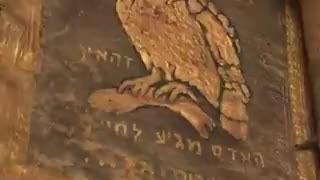 1:36
1:36
Fine Art Connection
5 months agoThe BAPHOMET manuscript, an enigmatic text with occult teachings and mysterious symbols
43215 -
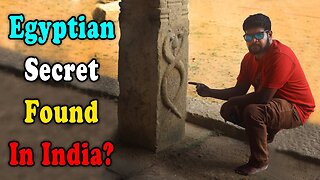 8:27
8:27
Praveen Mohan - Hindu Temples
1 year agoAncient Egyptian Symbols Hidden in Indian Temple? Secret of Snakes & Pinecone
250 -
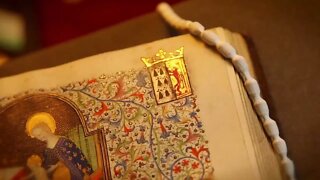 6:56
6:56
Beyond Science
6 years ago $0.01 earned10 ANCIENT Books & Manuscripts With HIDDEN Secrets
155 -
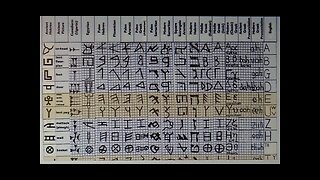 1:53:17
1:53:17
FlatEarthLegion
1 year agoLost Ceation Found in Ancient Glyphs
149 -
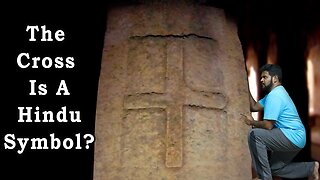 9:32
9:32
Praveen Mohan - Hindu Temples
1 year agoDid Ancient Hindus Worship The Cross ? Was The Cross Carved in Indian Temples?
2271 -
 9:55
9:55
Cognitio Dei
4 months agoUnveiling the Bible's Significance: Part 2 - From Ancient Scrolls to Modern Scripture
24 -
 1:24
1:24
killerjello
1 year agoDiscover the ancient secrets of your sign
5 -
 3:08
3:08
donmar316
8 months agoAN ANCIENT SATANIC SCROLL - NOTICE THE SYMBOLISM
43 -
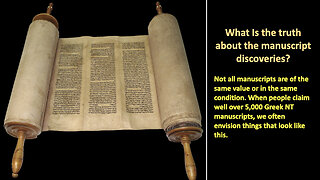 58:37
58:37
donahuePapa
11 months ago299 Manuscripts
142